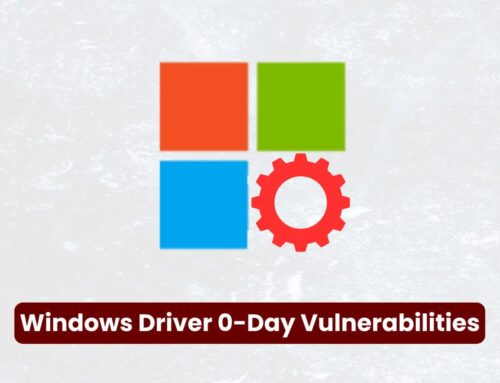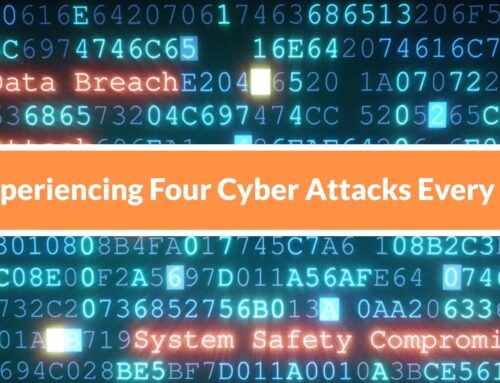
CISA and FBI Shared Tactics, Techniques, and Procedures of Scattered Spider Hacker Group
Unmasking Scattered Spider: CISA and FBI Detail Evolving Ransomware Tactics
The digital landscape is a constant battlefield, and staying ahead of sophisticated threat actors is paramount for organizational security. Recently, the Cybersecurity and Infrastructure Security Agency (CISA) and the Federal Bureau of Investigation (FBI) issued a critical joint cybersecurity advisory, shining a spotlight on the alarming evolution of the Scattered Spider cybercriminal group. Also known by various aliases such as UNC3944, Oktapus, and Storm-0875, this highly agile threat actor has significantly intensified its operations, shifting its focus from broad attacks to meticulously targeting large enterprises and their critical third-party contractors. Understanding their updated Tactics, Techniques, and Procedures (TTPs) is no longer optional; it’s essential for fortifying your defenses.
Who is Scattered Spider? A Profile of a Prolific Threat Actor
Scattered Spider is not a new entrant to the cybercrime scene, but their operational maturity and technical sophistication have markedly advanced. Initially recognized for their adeptness in social engineering and SIM-swapping attacks, the group has expanded its repertoire to include highly disruptive ransomware deployment. Their intelligence-gathering capabilities allow them to precisely identify and compromise targets, often leveraging initial access brokers to gain a foothold within victim networks. This adaptability and willingness to integrate new attack vectors make them a formidable adversary for even well-resourced security teams.
Scattered Spider’s Evolving Modus Operandi: Key TTPs
CISA and the FBI’s updated advisory details several critical TTPs that organizations must be aware of:
- Increased Focus on Large Enterprises and Contractors: The group now prioritizes high-value targets, understanding that compromising a large organization can yield greater financial returns. Their targeting of third-party contractors is particularly concerning, as it exposes potential supply chain vulnerabilities.
- Sophisticated Social Engineering: While SIM-swapping remains a core tactic, Scattered Spider has refined its social engineering techniques. They often impersonate IT support or legitimate service providers to trick employees into divulging credentials or installing malicious software. This psychological manipulation is a cornerstone of their initial access strategy.
- Bypassing Multi-Factor Authentication (MFA): Despite the widespread adoption of MFA, Scattered Spider has developed sophisticated methods to circumvent it. These include SIM-swapping to intercept one-time passcodes, session token theft, and exploiting push notification fatigue by bombarding users with MFA requests until they inadvertently accept.
- Living Off the Land (LotL) Techniques: Once inside a network, Scattered Spider extensively uses legitimate system tools and functionalities to move laterally, elevate privileges, and exfiltrate data. This “Living Off the Land” approach makes their activities harder to detect, as they blend in with normal network traffic.
- Ransomware Deployment and Data Exfiltration: The group’s ultimate goal is often data exfiltration followed by ransomware deployment. They employ various ransomware strains, often tailored to specific environments, causing significant operational disruption and data loss. This adds another layer of complexity to incident response, as both data recovery and financial negotiation become critical considerations.
Remediation Actions: Fortifying Your Defenses Against Scattered Spider
Mitigating the threat posed by Scattered Spider requires a multi-layered and proactive security strategy. Organizations should immediately implement the following remediation actions:
- Enhance Social Engineering Training: Conduct regular, realistic phishing and social engineering awareness training for all employees, emphasizing the dangers of unsolicited communications and the importance of verifying identities. Teach employees to recognize signs of attempted impersonation.
- Strengthen MFA Implementations: While MFA is crucial, it’s not foolproof. Prioritize phishing-resistant MFA methods such as FIDO2 security keys (relevant CVEs for MFA bypasses often exist, though not explicitly tied to Scattered Spider in this excerpt, organizations should research current threats), rather than SMS-based MFA. Implement strict policies for MFA enrollment and reset procedures.
- Implement Strong Identity and Access Management (IAM): Enforce the principle of least privilege across all user accounts and systems. Regularly review and revoke unnecessary access. Implement robust privileged access management (PAM) solutions.
- Network Segmentation: Isolate critical systems and sensitive data through network segmentation. This limits lateral movement even if an attacker gains initial access to a less critical segment.
- Endpoint Detection and Response (EDR) and Extended Detection and Response (XDR): Deploy and actively monitor EDR/XDR solutions across all endpoints. Configure these tools to detect anomalous behavior, fileless attacks, and LotL techniques.
- Regular Backups and Disaster Recovery: Maintain immutable, offline backups of all critical data. Develop and regularly test a comprehensive disaster recovery plan to ensure business continuity in the event of a ransomware attack.
- Incident Response Plan: Develop and regularly drill an incident response plan specific to ransomware and data exfiltration scenarios. Ensure clear roles, responsibilities, and communication protocols.
- Supply Chain Risk Management: Conduct thorough due diligence on all third-party vendors and contractors. Implement contractual obligations for security best practices and incident notification.
Tools for Detection and Mitigation
| Tool Name | Purpose | Link |
|---|---|---|
| Security Information and Event Management (SIEM) | Centralized logging and real-time analysis of security alerts to detect anomalous activity and potential breaches. | (Vendor-specific, e.g., Splunk, IBM QRadar) |
| Endpoint Detection and Response (EDR) / eXtended Detection and Response (XDR) | Advanced threat detection, investigation, and response capabilities on endpoints and across the IT estate. | (Vendor-specific, e.g., CrowdStrike, SentinelOne) |
| Multi-Factor Authentication (MFA) Solutions | Strengthen identity verification; prioritize phishing-resistant methods. | (Vendor-specific, e.g., Duo, Okta, Microsoft Azure AD) |
| Vulnerability Scanners | Identify and prioritize system and application vulnerabilities that Scattered Spider might exploit. | (Vendor-specific, e.g., Nessus, Qualys) |
| User and Entity Behavior Analytics (UEBA) | Detect insider threats and compromised accounts by analyzing user behavior patterns for anomalies. | (Often integrated into SIEM/XDR) |
Conclusion: A Call for Vigilance and Proactive Defense
The updated CISA and FBI advisory on Scattered Spider underscores a critical reality: cyber threats are not static. Groups like UNC3944 are constantly evolving, refining their tactics, and finding new avenues to exploit vulnerabilities. For organizations, this means security is an ongoing process of adaptation and enhancement. By understanding the specific TTPs of adversaries like Scattered Spider and proactively implementing robust security measures, including strong identity controls, comprehensive monitoring, and continuous employee training, organizations can significantly bolster their resilience against these increasingly sophisticated and destructive attacks. Vigilance and proactive defense are the cornerstones of effective cybersecurity in the face of such persistent threats.





